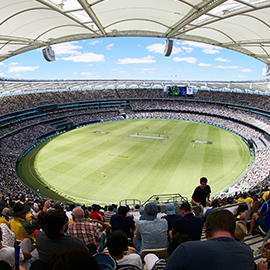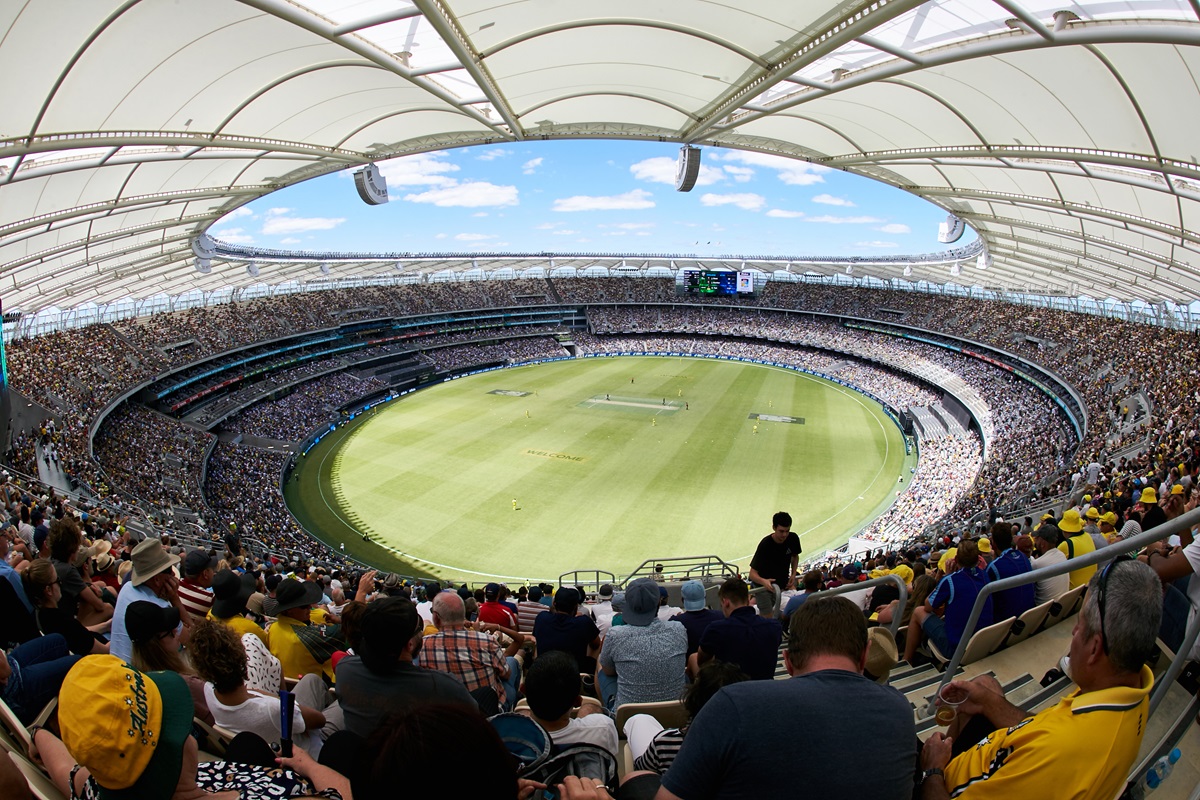

Cricket design and drop-in wicket fact sheet
- Home
- The Stadium & Stadium Park
- Fact Sheets
- Cricket design and drop-in wicket fact sheet
Cricket design and drop-in wicket fact sheet
Optus Stadium is a world-class multi-purpose venue capable of hosting a range of events, including cricket.
The commitment to a ‘fans first’ stadium has resulted in an innovative design ensuring an exceptional event atmosphere and home ground advantage that can only be experienced by being there.
The design acknowledges Western Australia’s unique sporting, cultural and Aboriginal heritage and the Stadium Park landscape provides a spectacular vista across the Swan River to the city.
The McGowan Government announced that a range of cricket content will be played at Optus Stadium from January 2018.

Stadium: key cricket features
- Design meets International Cricket Council standards and requirements.
- Five drop-in cricket wickets to replicate the character of the Western Australian Cricket Association (WACA) ground wicket.
- Playing surface 177m east:west and 141m north:south.
- Sight screens positioned to minimise impact on fan views and maximise seating for at least 55,000 fans.
- State-of-the-art team facilities include an indoor cricket warm-up and practice wicket for each team.
- Two dedicated Player Viewing Rooms with direct access to changing rooms and playing surface.
- Secure access from changing rooms to indoor and outdoor practice wickets.
- Ice baths and spas to maximise player recovery.
- Media facilities that have the ability to accommodate an increased international contingent for major Tests or limited overs matches.
- Opportunity to use drop-in seats on east and west boundaries to bring fans closer to the action.
Drop-in cricket wickets and testing
Drop-in wickets have been used in Australian stadia since 1996 and are currently in use at the Melbourne Cricket Ground, Spotless Stadium (Sydney), Etihad Stadium (Melbourne) and Adelaide Oval.
Since August 2014, Optus Stadium has been working with representatives from the WACA, Cricket Australia and the Optus Stadium construction contractor, Multiplex, on the design of the playing surface and the drop-in cricket wickets.
A prototype drop-in tray and wicket has been developed with the same soil profile and grass as the current WACA ground wicket. This prototype was tested by State Cricket players under match conditions and closely monitored by expert curators and consultants from Cricket Australia and the WACA.
Following the successful completion of the testing phase, an additional four drop-in cricket wickets were produced and the footings installed in the Stadium playing surface. The wickets were stored in the nursery located next to the 16 outdoor practice wickets on the northern side of the Stadium.
In November 2017, the five drop-in cricket wickets were moved by a cricket wicket transporter onto the Stadium playing surface. One wicket will be now be curated ahead of the cricket test events in December.
Testing and moving process
September 2015 – February 2016
- Installation of prototype tray and turf soil at Gloucester Park.
- Prototype wicket prepared to meet the necessary requirements for a Test Match and One Day International match.
February – March 2016
- Prototype drop-in cricket wicket tested by State cricket players under match conditions.
- Prototype drop-in cricket wicket closely monitored by expert curators and consultants.
- Hawk Eye technology was used to measure bounce and speed of the ball off the pitch.
- Specialist equipment was used to capture bulk density, moisture data and the hardness of the wicket.
- Visual assessments were also made of grass coverage and cracking.
May 2016
- Following the successful completion of the testing phase, four additional drop-in cricket wickets were developed.
- Wicket footings were installed at Optus Stadium.
April 2017
- The drop-in cricket wickets were moved from Gloucester Park to Optus Stadium and stored in the nursery next to the 16 outdoor practice wickets.
- Regular monitoring and maintenance of the five drop-in cricket wickets was undertaken.
November 2017
- Protection was laid on the centre pitch area prior to moving the drop-in cricket wickets from the northern side of Optus Stadium onto the playing surface.
- The process to transport all five drop-in cricket wickets took approximately 10 hours to complete and was undertaken overnight to avoid the heat.
- One of the wickets will now be curated for the test events in December where they will be tested for the first time onsite.
- The drop-in grass pitches that replace the cricket trays and are used for other sports are now stored in the nursery.

